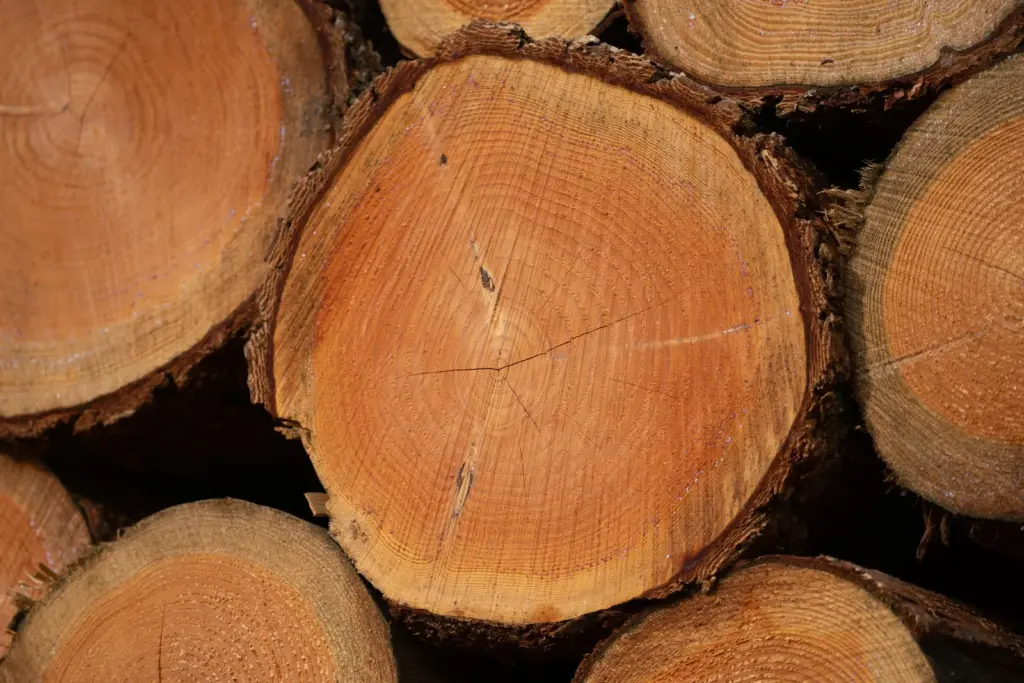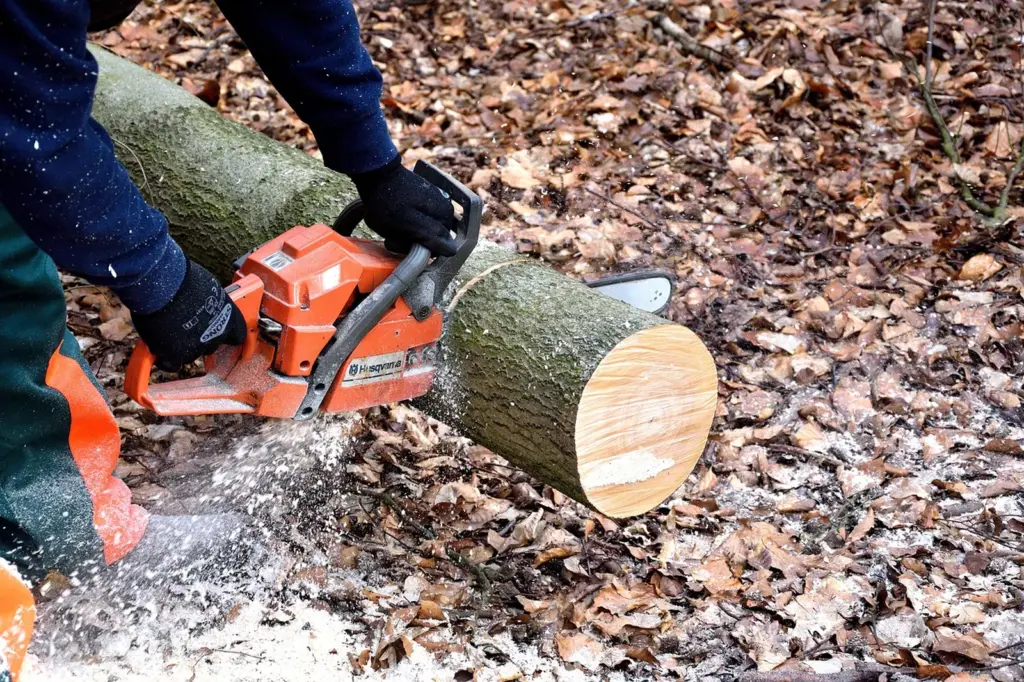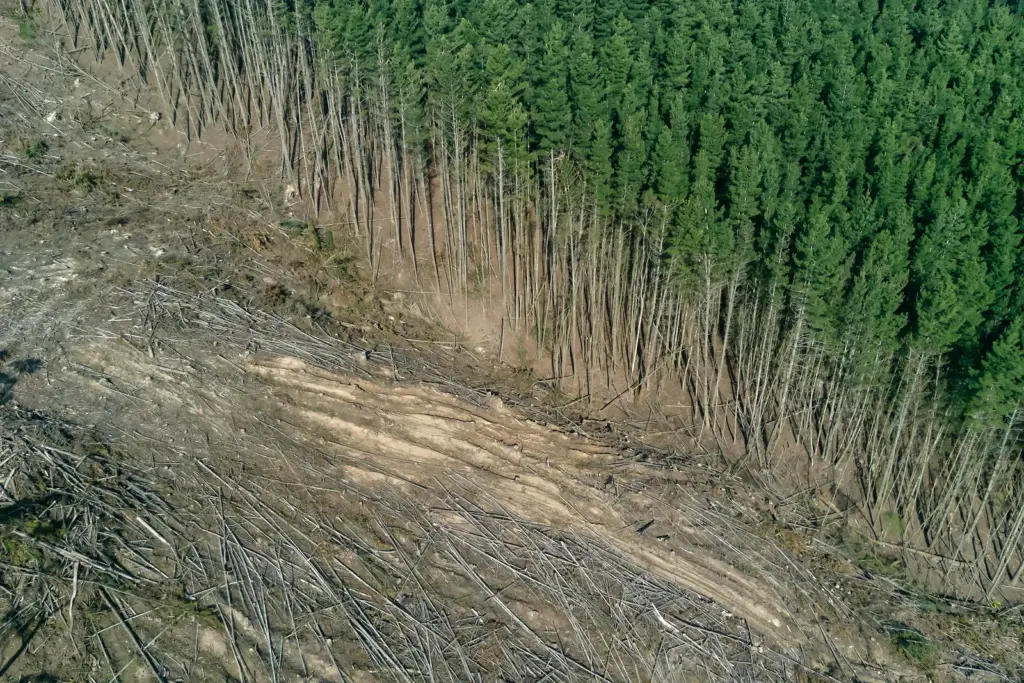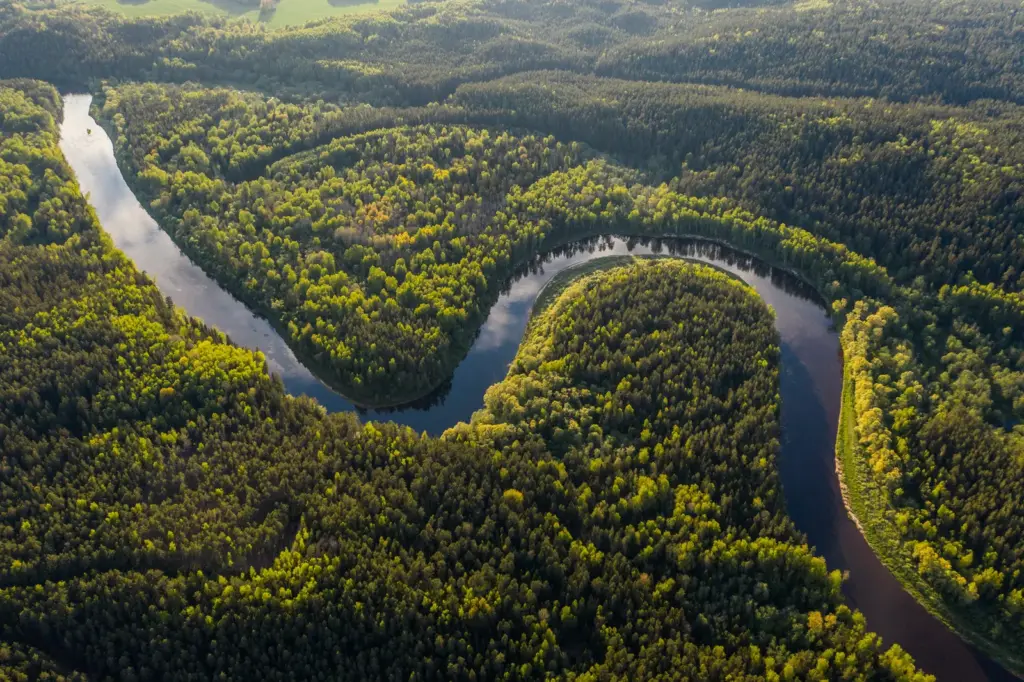Logging, or cutting down trees for commercial purposes, has been a standard activity for centuries, providing us with products like paper, furniture, textiles, and construction materials.
Additionally, the logging industry creates job opportunities, thus playing an important role in many local economies.
However, with the ongoing environmental crisis, we must scrutinize the impacts of logging on our world and consider the potential for sustainable practices.
This review examines the pros and cons of logging, its environmental impact, the potential for responsible logging, and the industry’s future.
Main Takeaways:
- Sustainable Logging: Balances economic benefits with ecological preservation, ensuring forests remain productive and healthy.
- Selective Logging: Harvests only mature trees, allowing younger ones to grow, maximizing carbon absorption and minimizing environmental impact.
- Reduced-impact logging (RIL) uses precise techniques, such as pre-logging surveys and directional felling, to reduce forest damage and aid recovery.
- Retention Forestry: Leaves key structures like old trees and deadwood to support biodiversity and maintain ecosystem functions.
- Mitigation Strategies: Include replanting native species, creating deadwood habitats, and using prescribed burns to restore and rejuvenate forests.
- Technological Integration: Satellite imagery and remote sensing enhance monitoring and planning for sustainable logging practices.
- Economic and Ecological Benefits: Sustainable logging supports local economies while protecting biodiversity, water quality, and carbon sequestration.
- Global Importance: Responsible logging practices are crucial for protecting vital ecosystems like the Amazon rainforest, combating illegal logging, and promoting recovery.

Photo by: Ruben Hanssen
Conventional Logging
Conventional logging is the traditional method of timber extraction, often characterized by minimal planning and significant environmental disruption. It typically involves clear-cutting or selective harvesting without considering sustainability or ecosystem health.
Practices:
- Conducting pre-harvest inventories and mapping.
- Restricting the construction of roads, skid trails, and log decks to necessary areas.
- Employing directional felling to limit damage to non-target vegetation.
- Cutting lianas before logging to decrease tree-fall damage.
The Pros of Logging: Why Logging Isn’t All Bad
Logging often gets a bad rap, paired with images of barren landscapes and chirp-less mornings.
Carbon Retention
Trees capture carbon dioxide as they grow; when turned into durable wood products like furniture or housing materials, that carbon stays locked away.
Logging done thoughtfully can minimize impact and allow forests to maintain higher carbon stocks than conventional logging. Combining this with reforestation efforts can be important to increasing forests’ carbon sink effect.
A study by Hugh Ross explores how selective logging, harvesting some but not all mature trees while they’re still healthy, can contribute to climate change mitigation. As young trees grow 2–4 times faster than old ones, replacing the logged old trees with seedlings enhances a forest’s capacity to remove carbon dioxide from the atmosphere. This idea resonates with sustainable forest management strategies that balance economic demands with environmental health.
Homes, Jobs, and Stories
For generations, wood has been the cornerstone of human civilization. From the sturdy beams of ancient temples to the cosy cabins of our childhood dreams, timber tells tales of resilience and craftsmanship.
Logging also fuels local economies, providing millions with jobs. A sustainable timber trade can be a lifeline in rural communities with limited options.
Biodiversity’s Unexpected Ally
Some logging practices can support biodiversity. Methods like retention forestry leave patches of unharvested forest intact, creating lifeboats for old-growth species and stepping stones for dispersal.
For example, aquatic and terrestrial species get a haven when riparian buffer strips are untouched along waterways.
In some cases, logging can help prevent forest fires by eliminating dry and dead timber that often fuels these devastating occurrences.
There are arguments, controversial opinions, and studies on the role logging plays in forest management.

The Cons of Logging
Despite some benefits, logging has substantial negative impacts, primarily on the environment. It can lead to deforestation, resulting in soil erosion, climate change, and biodiversity loss.
Increasing Poaching Risk
Logging activities require the construction of roads into forests. Over 50,000 kilometres of logging roads have been carved into the wilderness in Central Africa alone. Borneo, once a paradise of lush forests, has seen over 250,000 kilometres of these pathways since 1973. With each road comes more fragmentation, disruption, and peril for the forest creatures.
When the forest opens, roads grant access to timber trucks and those seeking bushmeat or ivory. Hunting pressure skyrockets in logged areas, driving vulnerable species closer to extinction.
Higher Susceptibility to Fire
A logged forest is a wounded forest. When stripped of its canopy, the once-cool understory becomes a tinderbox and more susceptible to fires sparked by drier, hotter conditions. The debris left behind—branches and leaves from non-target vegetation—fuels these flames.
Ecosystems struggle to recover after bushfires. Biodiversity suffers, and carbon stored in trees is released into the atmosphere, accelerating climate change.
Biodiversity Loss
Selective logging often promises minimal disruption, but the reality is more complex. While methods like Reduced-Impact Logging aim to reduce damage, even these practices cannot fully replicate the balance of an untouched forest.
Logging impacts biodiversity differently, from reducing habitat for old-growth specialists to fragmenting once seamless ecosystems. As trees fall, their canopy no longer shields the understory from sunlight, altering microclimates and making the forest floor inhospitable for shade-loving plants and animals.
The Carbon Paradox
Forests are the planet’s lungs, breathing in carbon dioxide and exhaling life-sustaining oxygen. But when trees fall, this delicate equilibrium tips. Logged forests release stored carbon, transforming them from carbon sinks to carbon sources.
Even practices meant to mitigate this impact, like retention forestry, don’t always succeed. While some carbon remains locked in wood products, the overall emissions from logging and its aftermath can be important.
Additionally, deforestation can disrupt the water cycle, alter ecosystems and lead to phenomena like floods and droughts.

Sustainable Logging: An Alternative Approach
Gone are the days when logging was simply about cutting down trees as fast as the saws could hum. Today, logging has evolved in the face of climate change, biodiversity loss, and the cries of a planet in distress.
Sustainable logging tries to balance the economic benefits of timber harvesting with the ecological necessity of preserving forests.
Close-to-Nature Forestry: Mimicking Mother Earth
Natural processes inspire close-to-nature forestry, and this method seeks to maintain wood production while minimizing harm.
Logging practices are designed to mimic natural disturbances like storms or fires. Close-to-nature forestry keeps ecosystems vibrant by preserving a mixed canopy, allowing natural regeneration, and leaving deadwood to decompose and enrich the soil.
While it’s not perfect—some old trees and deadwood must still be harvested—it strikes a balance.
Retention Forestry: Keeping Biodiversity
In Retention forestry, certain key structures are deliberately left behind to support biodiversity.
These structures might include:
- Large old trees: These giants provide homes for birds, insects, and fungi.
- Deadwood: Decaying logs are a beetle playground and a fungi buffet.
- Small patches of unharvested forest: These areas act as stepping stones, allowing species to move between habitats.
Retention forestry ensures that the forest’s essence remains intact even amidst change. Birds sing, fungi grow, and the life cycle continues, albeit with a few detours.
Reduced Impact Logging
Reduced Impact Logging is a practice that uses technology and planning for precision and targeted logging.
Here’s how it works:
- Pre-logging surveys map the forest, identifying which trees can be harvested without disrupting the ecosystem.
- Directional felling ensures trees fall in ways that minimize damage to surrounding vegetation.
- Controlled road-building avoids unnecessary fragmentation.
RIL reduces damage by up to 50% compared to conventional methods and helps forests recover faster. It’s like performing surgery with a scalpel instead of an axe.

Mitigation Post-Logging Strategies
Sustainable logging doesn’t stop when the saws fall silent. What happens afterwards is just as important.
Replanting and Enrichment Planting
After the timber is harvested, foresters replant native species and enrich the soil. By focusing on commercially valuable species, they ensure future timber yields while supporting forest regeneration.
Deadwood Creation and Restoration
Not all mitigation involves planting. Sometimes, it’s about stepping back and letting nature do its thing. Foresters might create deadwood habitats or block ditches to restore natural hydrology. Subtle tweaks like these create environments where biodiversity can flourish.
Prescribed Burns
In some cases, controlled fires are used to mimic natural disturbances. These fires clear away underbrush, encourage new growth, and create habitats for fire-dependent species. It’s a reminder that even destruction can be a form of creation in the right hands.
A Shared Future
Sustainable logging integrates the principles of sustainable forestry, which aims to balance the provision of timber and other forest products with ecosystem conservation.
This approach to logging prioritizes the health of the forest, viewing it not only as a source of wood but also as a habitat for wildlife, a regulator of water quality, and a sink for atmospheric carbon dioxide.
Sustainable logging involves careful planning and management practices, including selective cutting, minimizing forest fragmentation, and mitigating soil erosion.
Selective Logging
Selective logging is cutting only mature trees, leaving younger ones to grow. This method maximizes forests’ carbon-absorbing capacity while meeting commercial demands. Sustainable logging also encourages using all parts of the tree, reduces waste, and promotes reforestation efforts to protect forests and encourage biodiversity.
Satellite Imagery and Remote Sensing
New technology can help identify areas for sustainable logging and monitor the environmental impact.
The logging industry must adapt to a future in which we are more aware of environmental conservation.
Alternatives to Logging
Some alternative resources and activities are becoming more prevalent, such as using recycled materials, reducing consumption, and utilizing alternative materials like bamboo and hemp.

Logging in the Amazon Rainforest
The Amazon rainforest, often dubbed the “lungs of the Earth,” is under siege due to the insatiable global demand for timber. In 1996, Asian companies alone invested over US$500 million in Brazil’s timber industry, keen to exploit the rich resources of the Amazon as timber supplies in Asia dwindled.
The aggressive drive for timber in the Amazon can be attributed to various factors. Logging activities are closely tied to road construction and migratory movements. Selectively logged regions connected by new roads attract settlers who clear these areas for shifting cultivation.
Unfortunately, this hunger for timber has led to rampant illegal logging in the Amazon. While laws permit logging in certain areas, illegal practices persist extensively in Brazil and across several Amazon countries.
A recent study unveiled a shocking statistic: 40% of all logging in to Amazon is illegal. Illegal operations often use forged permits, exploit commercially valuable trees without considering legal protections, exceed authorized quotas, cut outside of concession areas, and steal from protected and indigenous lands.
Forest concessions are short-term, so companies need more incentives to replant trees or harvest efficiently. Instead, the rush to maximize profits damages regions that take years to recover. This invariably results in biodiversity loss, over-hunting of wildlife, and conversion for agriculture or pasture.
The detrimental effects of logging extend beyond the targeted trees. Logging operations usually result in collateral damage, with surrounding trees being damaged or felled unintentionally. The aftermath of logging often leads to erosion that washes away nutrients, adversely affecting streams and rivers. If it occurs at all, timber regrowth takes time, given that logged areas are frequently repurposed for cattle ranching or cultivation.
Some hope lies in nature’s resilience, as studies indicate that logged forests can recover to some extent. A survey conducted in the Tapajós National Forest in the Brazilian Amazon revealed that logging initially stimulated growth, an effect that lasted about three years. After that, growth rates in these areas were similar to those in untouched forests.
However, this natural regeneration cannot counterbalance the immense scale of destruction wrought by logging. This situation underlines the urgent need for responsible practices and stringent policing of illegal operations to safeguard the Amazon rainforest, our planet’s critical lung.
Conclusions
Sustainable logging emerges as a promising middle path in the intricate dance between economic development and environmental preservation. While the industry has long been associated with environmental degradation, it now stands at a crossroads where responsible practices can redefine its impact.
Sustainable logging practices like selective logging, reduced impact logging, and retention forestry offer a glimpse into a future where forests are not merely exploited but managed with care and foresight.
These practices can ensure a continuous timber supply, help maintain biodiversity, support carbon sequestration, and protect ecosystems from further fragmentation. Mitigation strategies such as replanting, deadwood creation, and prescribed burns further enhance forest recovery and resilience. Moreover, integrating advanced technologies like satellite imagery and remote sensing ensures better monitoring and management of logging activities.
The global push for sustainable forestry needs a broader shift towards recognizing forests’ multifaceted value as economic resources and vital ecological treasures.
Lorem ipsum dolor sit amet, consectetur adipiscing elit. Ut elit tellus, luctus nec ullamcorper mattis, pulvinar dapibus leo.



